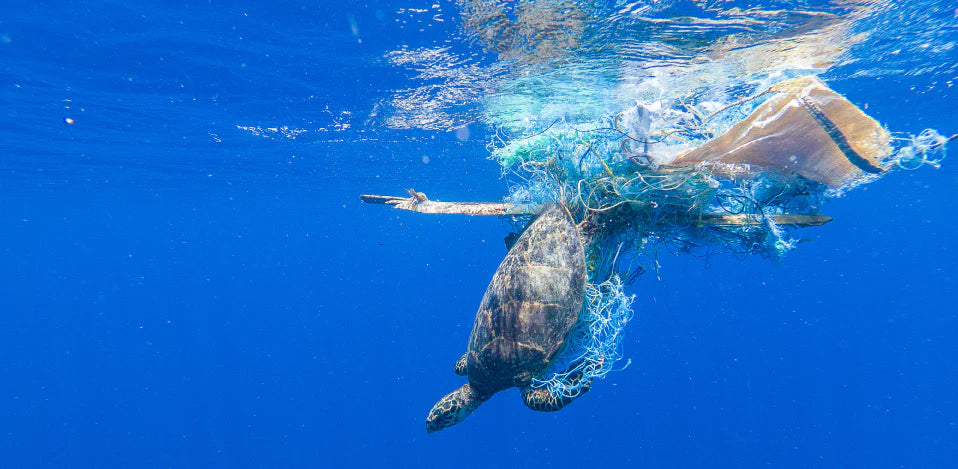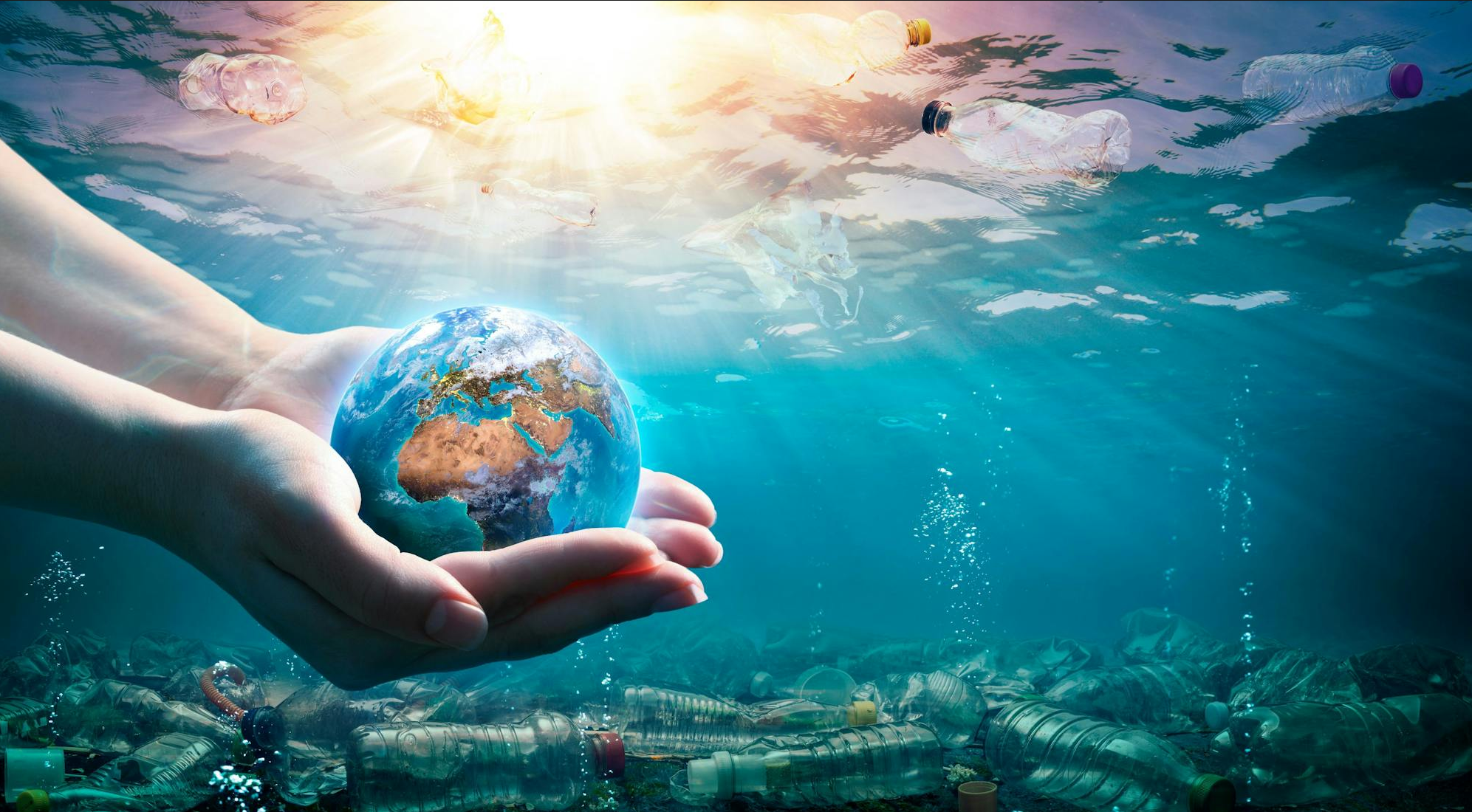5 MIN READ
10-21-2024
Hurricanes Stir Up Plastic
Mikaela Walsh, 4ocean Research Analyst
These destructive storms have detrimental effects on the local communities, but how do they affect marine pollution?
Hurricanes form in a cycle when warm, moist air over warm water is replaced by cool air that warms and rises, creating storm clouds where the circular motion begins. Hurricanes stir up the water and air, causing extremely strong winds, intense storm surges, and heavy rain. Flooding is often one of the effects of hurricanes as the cycle pushes the waves onto land and rain.
Hurricanes are split up into categories on a scale from 1-5.
- Category 1: Wind, 74-95 mph. Storm surge, 4-5 feet. Often minimal damage to residential areas.
- Category 2: Wind, 96-110 mph. Storm surge, 6-8 feet. Often moderate damage to residential areas.
- Category 3: Wind, 111-130 mph. Storm surge, 9-12 feet. Often extensive damage to residential areas.
- Category 4: Wind, 131-155 mph. Storm surge, 13-16 feet. Often, there is extreme damage to residential areas.
- Category 5: Wind, over 155 mph. Storm surge, over 18 feet. Often catastrophic damage to residential areas.

Florida, we are officially in hurricane season. A major hurricane is classified as a hurricane over a category 3 hurricane.
Major Hurricane Helene hit the West Coast of Florida and traveled across the United States, causing massive destruction. Our condolences go out to all the families affected.
Natural disasters strike all across the world year-round, causing massive chaos for anyone who is in the path of natural disasters. Over the past few years, major hurricanes have made landfall worldwide, causing irreversible consequences for the residents. With all these hurricanes happening, have you ever questioned how this affects pollution?

Hurricanes are powerful storms that increase a massive amount of ocean plastic and marine debris pollution. These storms cause a lot of damage to residential houses, forcing the houses to fall apart and dragging the destroyed pieces into the ocean. Not to mention the destruction of cars and boats, which can also be pulled into the sea. Furthermore, the strong currents of the water pull trash from all over the land areas and force it directly to the sea. Ultimately, the powerful currents stir up all the plastic on land and then pull it straight into the ocean.
In 2005, major Hurricane Katrina, a category 5, clobbered New Orleans, Louisiana, causing 125 billion dollars in damage. This hurricane was one of the most devastating to hit this region, with some areas taking years to recover. Researchers wanted to examine how much debris washes into the ocean due to hurricanes. So, when this hurricane hit, the researchers used satellite imaging, airborne photographs, and imaging spectroscopy of the coastline to examine the effect of hurricanes on oceanic pollution.

The researchers examined the amount of debris floating on the water's surface from August 30th, the day after the storm's landfall, to September 19th. They found the largest area of debris floating on the surface was August 31st, two days after the hurricane made landfall, with 21.7 km2 of debris. They hypothesize that most floating debris could be abandoned lumber, uprooted plants, plastic, and other materials.
When a natural disaster occurs, the amount of pollution that enters the environment is extremely hard to understand for many reasons. This satellite and sonar data method could be advantageous for future data collection and analysis.
Many researchers are wondering how microplastics affect hurricanes. Since microplastics are so tiny, researchers think that hurricanes carry them in the storm and dispense microplastic particles across the area that the hurricane impacts, similar to the idea of acid rain or possibly nanoplastics and microplastic particles in rain.
Researchers have previously observed that water molecules in rain and storms can bind to small particles and pollutants. A huge question in the science world is how these microplastics affect humans and other organisms. Could these hurricanes scatter a massive amount of microplastic particles across new regions? This includes farms, which could affect cattle and vegetables or fruit consumed by humans.
This hypothesis was examined when Hurricane Larry went through Canada in 2021, and researchers found that the storm caused a dispersion of microplastic particles into the air. They tested the amount of microplastics in a remote area right after the hurricane and then for the following weeks. They noticed a dramatic increase in microplastic particles right after the storm, whose presence slowly decreased as time went on. This study shows that microplastic particles are small enough to get carried through storms and dispensed into remote areas during natural disasters.
The data showed that the microplastic found on land after the hurricane came through originated from the ocean. The type of plastic that was abundantly identified was Polymethyl methacrylate, with high findings of acrylic and polyester.

Hurricanes have very detrimental effects on the residents and aquatic life. Not only do hurricanes contribute to the amount of debris entering the ocean, but they also affect the oceanic plastic entering remote areas inland.
Hurricane preparation is essential for remaining safe and reducing the amount of man-made debris entering the oceans. Natural disasters are uncontrollable and damage residential areas and the environment.
Helpful tips for preparing for a hurricane:
- Secure trash in a safe location.
- Clear the yard from objects that could be displaced.
- Fill up reusable water bottles.
- Move the car to the elevator surface in case of flooring.
- Prepare food using reusable alternatives instead of single-use food.
Reducing the amount of plastic pollution entering our oceans is essential. Reducing the amount of single-use plastic you use daily can have highly beneficial environmental effects. Plastic won’t break down, but it will break down into smaller pieces called microplastic. Microplastic is so tiny that it can be transported through the winds and rain of hurricanes! Microplastics have been found in the deepest parts of the ocean and the most remote areas worldwide. They have even been thoroughly documented in humans!
Protect yourself from hurricanes and reduce the amount of plastic pollution entering the ocean during a hurricane!




